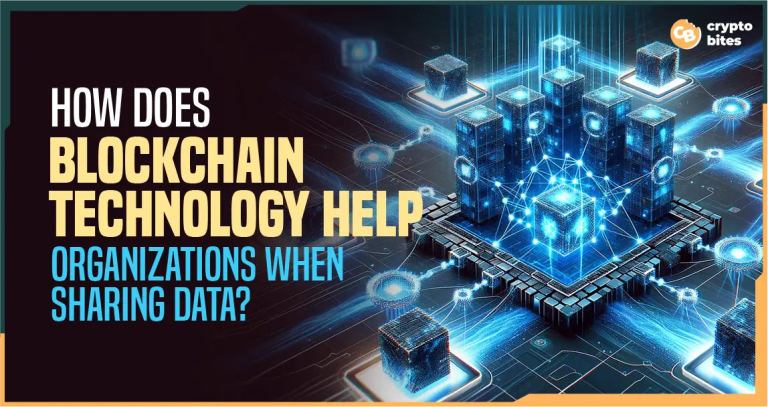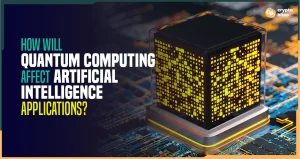
How Does Blockchain Technology Help Organizations When Sharing Data
Are you still using those year-old spreadsheets in organizational data management? Well, there’s blockchain, a more advanced technology for securely sharing data, and it’s worth checking out.
Since its emergence, blockchain is constantly evolving to completely transform the traditional ways an organization handles data and information.
But how does blockchain technology help organizations when sharing data? How does the whole process work out? Well, I’ll get everything covered in this guide!
I’m going to talk about:
- The core concept of blockchain technology
- Advantages of blockchain-based data sharing for organizations
- Its limitations and challenges
- Examples of blockchain data sharing in real world
- The future of blockchain in data-driven business management
What is Blockchain? How Does it Work?
To put it in the simplest way, blockchain refers to a digital ledger that keeps track of online transactions across multiple computers and nodes.
It works through a decentralized and distributed network technology to store data in a secure, immutable, and tamper-proof way.
As it preserves information in blocks, and the blocks are linked in a chain, it is called the blockchain.
Because of the transparency, accountability, and peer-to-peer networking of this leading-edge invention, it’s rapidly growing as the most popular and trustworthy digital platform for confidential data management.
The global market of blockchain technology is expected to reach $1 trillion by 2030 with an expansive annual growth rate of 82.8%.
How Does Blockchain Technology Help Organizations When Sharing Data?
One of the biggest standout features of blockchain is decentralized networking which facilitates smoother data exchange for companies and organizations.
When it comes to staying ahead of competitors, businesses need a secure digital platform to share information across multiple receivers without the fear of fraud.
This is where Blockchain emerges as a game changer as it eliminates any central authority to control or alter data.
Instead, all individuals of the entire network, known as nodes, have access to the document, and therefore, a single person cannot change, manipulate, or modify any entry however they wish.
More importantly, this digital ledger keeps track of all the transactions that ever happened in the network and each transaction is recorded using an exclusive cryptographic sign.
No wonder it never fails to protect the trust and transparency among the stakeholders when they exchange extremely valuable data in real time.
6 Key Benefits of Blockchain Data Sharing
Data sharing, right now, is one of the most crucial aspects for organizations for cross-functional learning, and they are clearly catching on to the endless potential of blockchain-based data exchange.
Let’s break down the key benefits of this distributed ledger technology below-
1. Immutable Records
Immutability is an inherent feature in every blockchain network that facilitates irreversible entries.
A transaction once recorded can hardly be changed without authorized access. It’s more like painting with a permanent color that never fades away.
Immutable records profit start-ups and organizations with the following favors-
Enhanced Security: Regardless of industry, blockchain protects organizational data with a special encrypted code that can only be accessed by authorized people.
As a result, businesses and companies get the next level of security in digital data sharing.
When someone tries to hack or manipulate information, every block in the chain must be altered. Without all nodes across the network complying, it is nearly impossible.
Data Integrity: In blockchain, any information once added remains unchanged forever. This surely ensures uncompromised data integrity.
When a particular information is added to a block, it is stored with an exclusive cryptographic sign, which is a hash in most cases.
Even a minor modification to the original data produces a completely different hash notifying the entire network. That’s how it prevents unauthorized data alteration.
2. Decentralization and Peer-to-Peer Networking
Decentralization is the core concept of blockchain compared to traditional data storage systems. It avails the following favors in digital data exchange-
- People-to-people networking
- No requirement for intermediaries or middlemen
- Collective maintenance of data without any central authority
- Authenticity of data management without any discrepancy
Blockchain is more resilient to potential cyber-attacks compared to the traditional centralized data storage center.
A central database could be compromised, but here, each participant of the network owns a copy which is nearly impossible to breach.
Also, you don’t need to invest time and money in third parties like banks or legal entities.
Blockchain’s streamlined processes make peer-to-peer transactions a breeze by accelerating the speed.
3. Facilitates Smart Contracts
What sets blockchain data sharing apart is the smart contracts and automation.
Businesses and organizations can utilize this feature to automatically update and share information upon fulfilling pre-established conditions.
These self-driven contracts do not require manual intervention which reduces administrative costs and inconveniences.
Once the specified conditions are met, actions are effortlessly executed within the network through some lines of code.
For example, when you buy goods from a supplier, based on both party’s agreement, the payments will be automatically transferred once the delivery is done without any paperwork or manual entry.
This is one of the most basic uses though. On a larger scale, blockchain remarkably benefits businesses by automating the execution to speed up the workflow.
4. Transparency and Accountability
Blockchain technology helps organizations when sharing data by assuring open-book transparency. All members of the network have equal authority to access data and verify how they are being used, leading toward a healthy practice of accountability.
It is impossible, even for a participant with access, to manipulate entries in a public blockchain network without other participants catching him red-handed.
Thus, it evens out the relationship among the stakeholders which is built on reliance.
5. Greater Ownership and Control
Apparently, it’s on the organization to decide who can access, modify, or share any specific data via blockchain. This undoubtedly establishes a firm authority over the distributed data management network.
Here’s how blockchain empowers companies with better data ownership and control-
Consensus Mechanism: In a decentralized platform like blockchain, consensus mechanism is an important concept, said Nick Ranga, a senior cryptocurrency analyst.
It refers to a set of rules for a single data set agreed upon by all participants in a specific blockchain network.
Before a new entry is registered, the majority of the nodes must give their consent to include it in the chain.
Thus, it ensures that only legitimate transactions are added to the network.
Traceability: Traceability holds the utmost importance for organizational data exchange as they need to track massive volumes of data while ensuring their ethical use.
Thankfully, the record of every single transaction is preserved in a time-stamped framework with blockchain technology making it effortlessly trackable.
Therefore, it gives the companies the upper hand while sharing their invaluable data on a public platform.
6. Cost-Effective Data Management
This is another significant aspect of blockchain. By declining third-party interference, it allows direct data exchange that is more time and money-efficient.
Moreover, it cuts down operational costs by eliminating the need for data arrangement through multiple systems. The concurrent data exchange policy with different parties makes it practical and profitable.
Challenges of Blockchain in Sharing Data
Despite the myriad benefits blockchain brings to the table, on the flip side, it comes with some barriers as well. Let’s take a tour of its most challenging aspects in real-world data sharing-
- Regulatory Hurdles: Unlike the centralized system, blockchain is technically a bit too complicated. Moreover, the concept of blockchain-based data sharing is relatively new and its regulation mechanism is still expanding with time. It takes time, talent, and investment to get used to the complexity.
- Interoperability Challenges: The incompatibility between different blockchain networks often leads to interoperability challenges. So, you cannot share data without a standard framework of data exchange.
- Lack of Administration: We all know, decentralization is the defining feature of blockchain. At the same time, it refers to the lack of a central authority or administration. So, it gets difficult to resolve disputes when needed.
- Scalability: Things could be more challenging in case you need higher volumes of data exchange. Remember, this distributed ledger technology gets slower because of its not-so-mature infrastructure in terms of increased transactions
- Energy Consumption: Verifying each transaction and creating chains of blocks are energy-intensive processes. Thus, blockchain consumes a huge amount of energy that could negatively affect the environment.
However, if you can handle these minor issues, it is indeed, a striking tool for sharing data to electrify the potential of any organization.
Real-World Applications of Blockchain Data Sharing Across Industries
Let’s find out some real-life applications of blockchain in data sharing below:
- Walmart
- Spotify
- De Beers
- Nationwide Insurance
- IBM Blockchain
- MedRec
- Mediaocean
- Humana
- MultiPlan
- Some famous luxury retail brands like Gucci, Dolce & Gabbana, and Tiffany & Co.
All the companies mentioned above heavily rely on blockchain for information sharing and communication. It goes to show how blockchain is gradually becoming a major player in data management and collaboration.
Future Outlook of Blockchain Technology in Data Sharing
According to a February 2023 survey, 38% of US workers claimed to widely use blockchain technology for their businesses.
Another 44% said that it will take over the digital data-sharing sector within the next three years.
So, there’s no denying that blockchain is the future in reshaping digital data-sharing practices in a new way.
In the coming years, several industries will profoundly benefit by leveraging this groundbreaking application; supply chain management, finance, banking, logistics, advanced healthcare, governmental institutions, etc. to name a few.
The upcoming trends like Decentralize Finance (DeFi), Permissioned Blockchains, Asset Tokenization, etc, will open endless possibilities to organizations that adapt to its constantly evolving ecosystem.
Conclusion
I hope this extensive guide on how blockchain helps organizations when sharing data can serve as a roadmap for beginners who are yet to explore this technological breakthrough in digital data management.
It could be a transformative force for businesses and industries to share data by defeating the drawbacks of outdated data exchange methods.
However, it has its own limitations which call for careful considerations to avoid ups and downs in workflow.
But the benefits certainly exceed the challenges, and that’s why, it’s time to harness its full potential in every industrial sector by embracing this cutting-edge data exchange solution.




